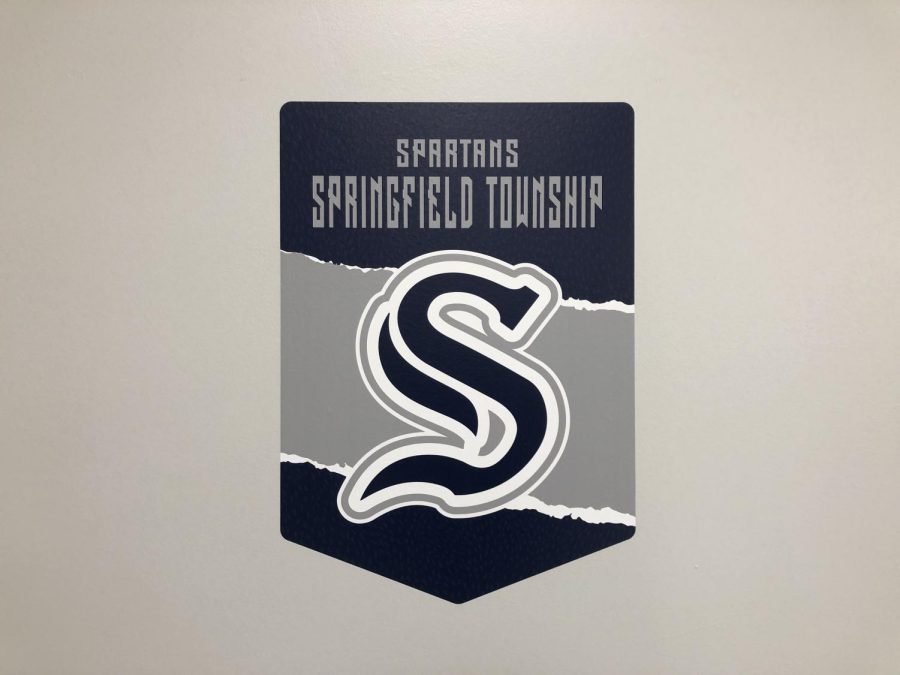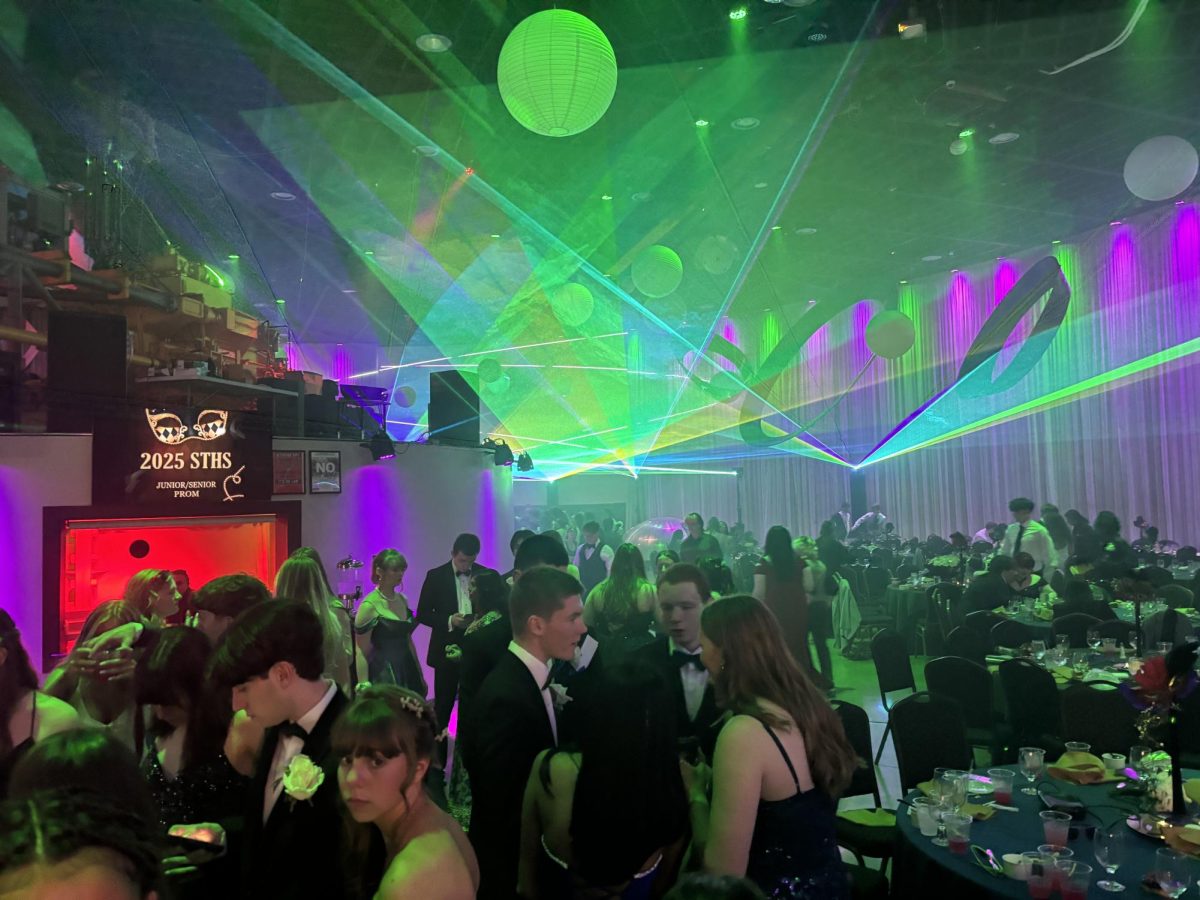Through elective offerings, Springfield students gain a more in-depth understanding of different topics that are not explicitly taught in other core classes. Because students have so much freedom in choosing their electives, they can truly explore their interests. Within this article, interviews with teachers and participants in these various classes explain what makes these classes so important and why they are included in Springfield’s curriculum.
Financial Literacy
By Adam DiBattista
Springfield Township High School has many great opportunities for students to learn skills to use after high school, including classes like Personal Finance, Introduction to Business, and Marketing Principles. These classes help students gain skills and experience necessary for the workforce.
Mr. Levin, the Introduction to Business and Personal Finance teacher, says that his classes “teach students the vital skills that young and even older adults really need to have, to be able to thrive in this increasingly complex world around us.”
He teaches students “how to save, budget, invest and how to understand the different choices and challenges that adults face in their financial lives.” Mr. Levin said that because he was “never taught these things” as a kid and “had to learn all by myself,” Mr. Levin wanted to ensure that students understood crucial skills.
DECA, a financial club at Springfield run by Mr. Levin, also helps students learn more about financial responsibilities.

Matthew Hay, Marketing Vice President of DECA, says that Mr. Levin’s classes “teaches the fundamentals of business and how to talk about it.” Hay also said that “the skills I learned taught me proper language and money skills which I use in my presentations to answer prompts on marketing and sales.” As Hay says, “although these skills don’t seem important now, in the future they could be the difference when getting a job or buying a house.”
Hay added that the skills taught through DECA are “something everyone should go into adult life knowing,” and will only prepare them for challenges later in life.
These electives and DECA enhance a student’s financial knowledge and equip them with the necessary skills to be successful in life.
STEM
By Anya Geynisman
Springfield Township High School offers a wide variety of STEM (Science, Technology, Engineering, and Mathematics) electives. These courses are mainly taught by Ms. Whittaker, including Programming, AP Computer Science Principles, Robotics, Web Design, and Future Studies. Ms. Whittaker also hopes to introduce two courses next year: Introduction To Computing For Humanities and Introduction to Information Society And Security.
Ms. Whittaker believes these classes offer a “new way of looking at technology,” such as how we use our everyday things like apps, phones, etc., and how they work, or the ability to figure out how to turn an idea or concept into something that works.

Cody Natali and Joanna Ye, both sophomores, take Ms. Whittaker’s AP Computer Science Principles class and find the coursework engaging.
Ye also likes that “it brings out your cognitive abilities,” and Natali says it offers “problem-solving skills, programming knowledge, how the internet works.”
The different courses mainly offer introductory skills that give students a first step into the world of STEM allowing students to find a passion in high school that can carry through learning during and after college. Ms. Whittaker says her AP classes will most likely take care of a first-class requirement if someone wants to take computer science in college, while her other classes offer great starting points for learning in that subject. Ye, who knows she wants to pursue engineering, said she took AP Computer Science because it was on track for that study. Natali says anything involving STEM and AP Computer Science “pushes you to it.”
The STEM electives offer an excellent opportunity for any student with an interest in that area.
Art
By Amelia Bohr

Art is one of the most critical assets to a student’s ability to use their imagination in many different ways. Springfield Township High School offers an array of art classes to those who enjoy it, such as Art I, Painting and Drawing, Art II, Art III, Art IV/AP Art, Ceramics I and II, and Fibers and Design. These electives allow students to use their creativity with help from our art teachers: Mrs. Greenawalt, Mrs. Silvius, and Ms. Koltsoon. Nick Shermer, a NAHS (National Art Honors Society) student who has taken a few art electives, explained these classes and why anyone should choose them.
What art electives have you taken?
So far, I have only been able to take Painting and Drawing and Art II, but I am also involved in the art club offered at our school, NAHS (National Art Honor Society)
Did you enjoy them, and why?
I have enjoyed both of the classes that I have taken not only because of the courses and projects I did but also because of the supportive teachers I had. All of the projects were very fun and inspiring, teaching us (the students) how to use a multitude of different supplies and techniques. And the teachers were always very encouraging and kind, making the class periods very fun to work in.
What makes each art elective different from each other?
The different electives stay unique by keeping either skill level or projects separate. Art I/Painting and Drawing, Art II, Art III, and Art IV/AP Art are art classes that can build on each other during your high school career. To keep the classes different from each other, the teachers ask more and expect more in the higher-level classes, as well as incorporating different things into the projects. Other courses include Ceramics I and II, as well as Fibers and Design. Ceramics focuses on pottery and different projects with clay, which is not touched on in any of the other art classes. Fibers and Design focuses on textiles and sewing. There are projects with needle felting and different quilting techniques as well. Both classes are great for students who want a different pace of art classes they might have taken in the past.
Do you think these classes are helpful for those who enjoy and or want to pursue art?
I definitely think that these classes are great for those who enjoy and want to pursue art as a career. Not only does it give you a chance to enjoy something in an academic setting, but it also gives you a taste of what art classes might be like at a college or university. In the upper-level art classes (Art III, Art IV, and AP Art), there is a focus on critiques to prepare students for the brutal critiques they might face in college classes. The school also gives students the experience of many different materials they might otherwise have access to, allowing them to find which medium they like to work with the best.
If you could change anything about the art electives, what would you change?
There isn’t anything I would wish to change about the art classes I have taken. As I haven’t taken the other classes I cannot directly speak on them, but from what I have heard from students who took the other classes, they enjoyed them as well.
Do you think any more art classes should be added to the electives?
The only thing that I wish would be different is if Glass Works could be added back. Mark (Kobasz), one of the old art teachers who retired this year, ran the class as that was one of his chosen mediums that he worked in. I have heard that it was a class that was very fun and interesting, so I would want that back. Other than that, I think our school does a great job at giving kids the opportunity to enjoy art and create many different types of art.
(Note from the editor: Glass Works is still offered at STHS; however, not enough students signed up this year for it to run.)
Humanities
By Asher Silberman
The Social Studies department has a great selection of humanities electives open for students to take; options include Psychology, AP Psychology, Sociology, Street Law, Economics, History Through Film, African American History, and Ethnic Studies. These electives often correlate with history classes, helping to create students with a full understanding of civics and history.
What humanities elective options are offered in our school, and which do you teach?
“So over the past few years, we have been working to create more elective options for students. Currently, we offer eight electives; intro to Psychology, AP Psychology, Sociology, Street Law, economics, History through Film, African American History, and Ethnic Studies. I teach Introduction to Psychology, Sociology, and Street Law.”
 Which of those is your favorite to teach?
Which of those is your favorite to teach?
“Well, I wouldn’t say that I have a favorite. Although they’re similar, each class is different. But if I had to pick, right now, I would go with Street Law, only because it is the newest course.”
How do humanity electives compare to other electives in terms of info. and work?
“As a social studies teacher, I can only speak to the classes that we teach in our department. In the classes I teach, I try to make the classes as relatable and practical as possible, so compared to the required courses, electives tend to be very… discussion and project-based classes. Since electives are open to all students in different grade levels, the work needs to be more accessible compared to, say, an honors or even an AP-level course. At the same time, that does not mean that electives are easy.”
Do you recommend these electives? If so, which are the most useful?
“YES! I mean, don’t get me wrong, having a study hall or two on your schedule would be my first choice if I were a student, but, come on, you still need credits to graduate. The social studies electives give you an opportunity to learn more about yourself and the world around you. I think, in terms of “usefulness,” all the electives would be useful, and it would be up to the students to decide what they are most interested in learning about. And if you can’t decide, just take them all!”














Mrs. Koltsoon • Feb 29, 2024 at 9:01 am
Thank for this wonderful highlight of the courses available at STHS, especially the art offerings! I would just like to clarify that there is in fact a sculpture class! The sculpture class this semester is focusing on a variety of materials to create three dimensional art work including wire and metals, fibers, recycled or found materials, and clay.
adviser • Feb 29, 2024 at 11:59 am
Nadia,
Thank you for letting us know. We will correct the story immediately.
Take care,
Jenn McCaslin